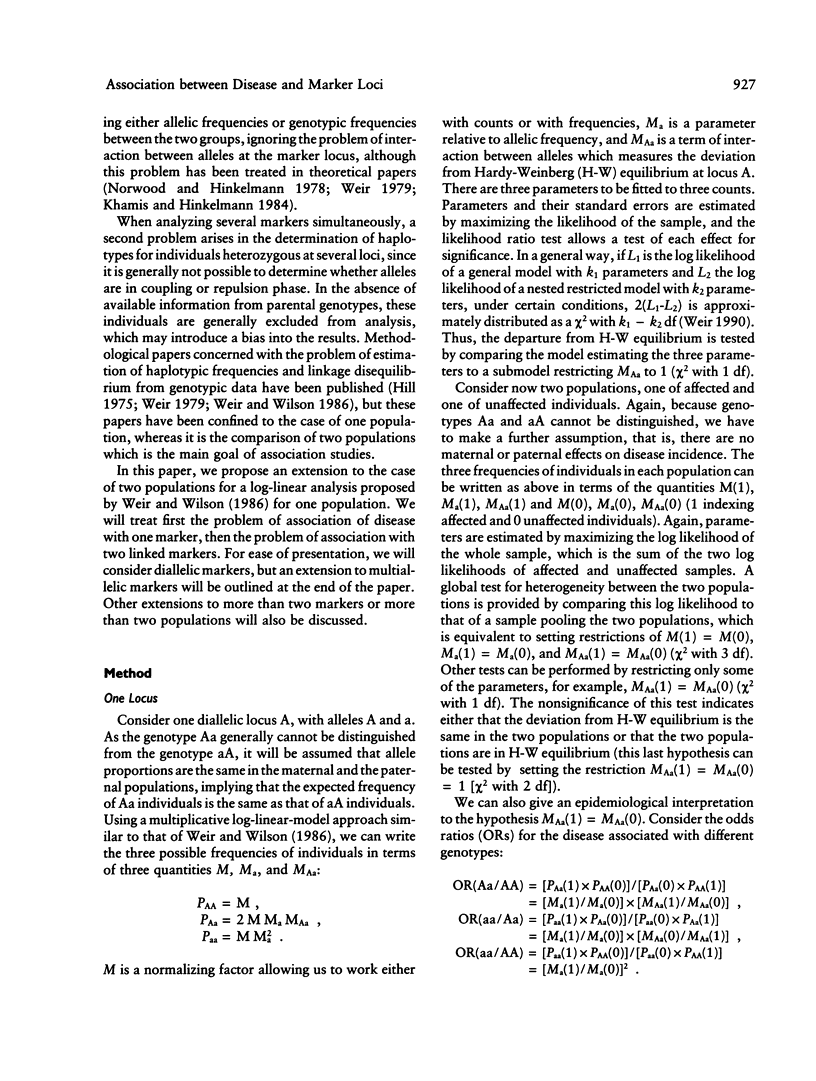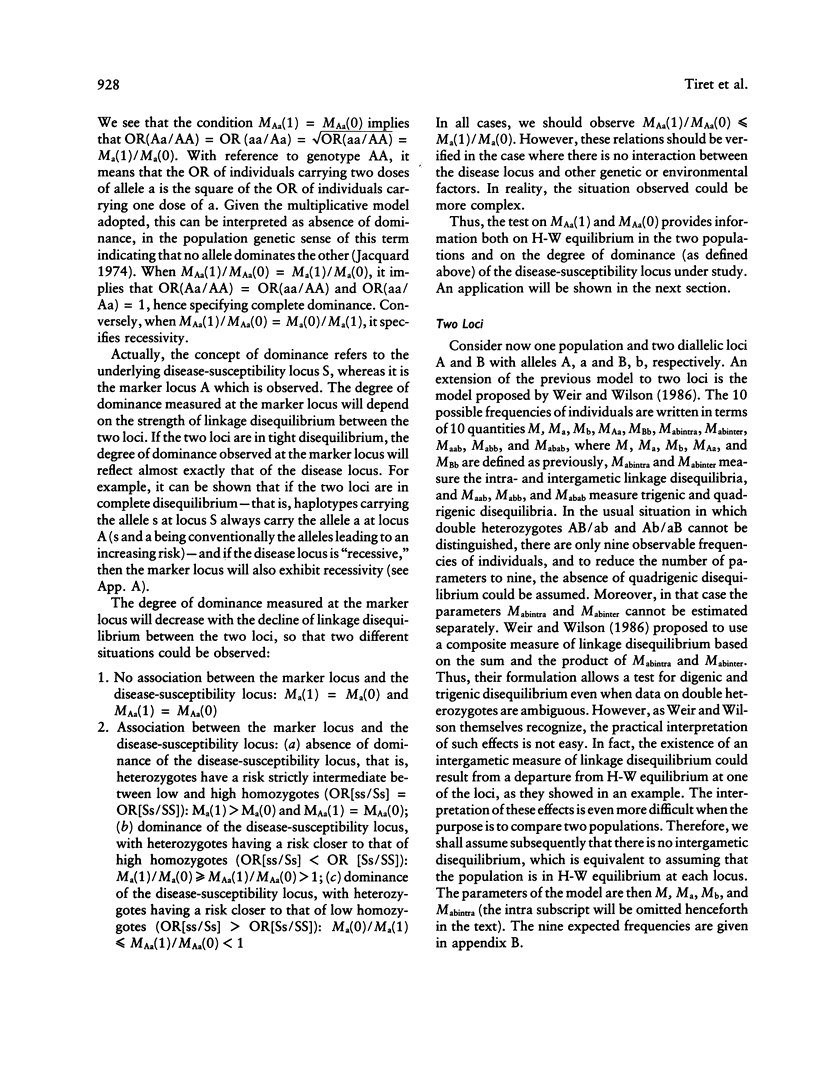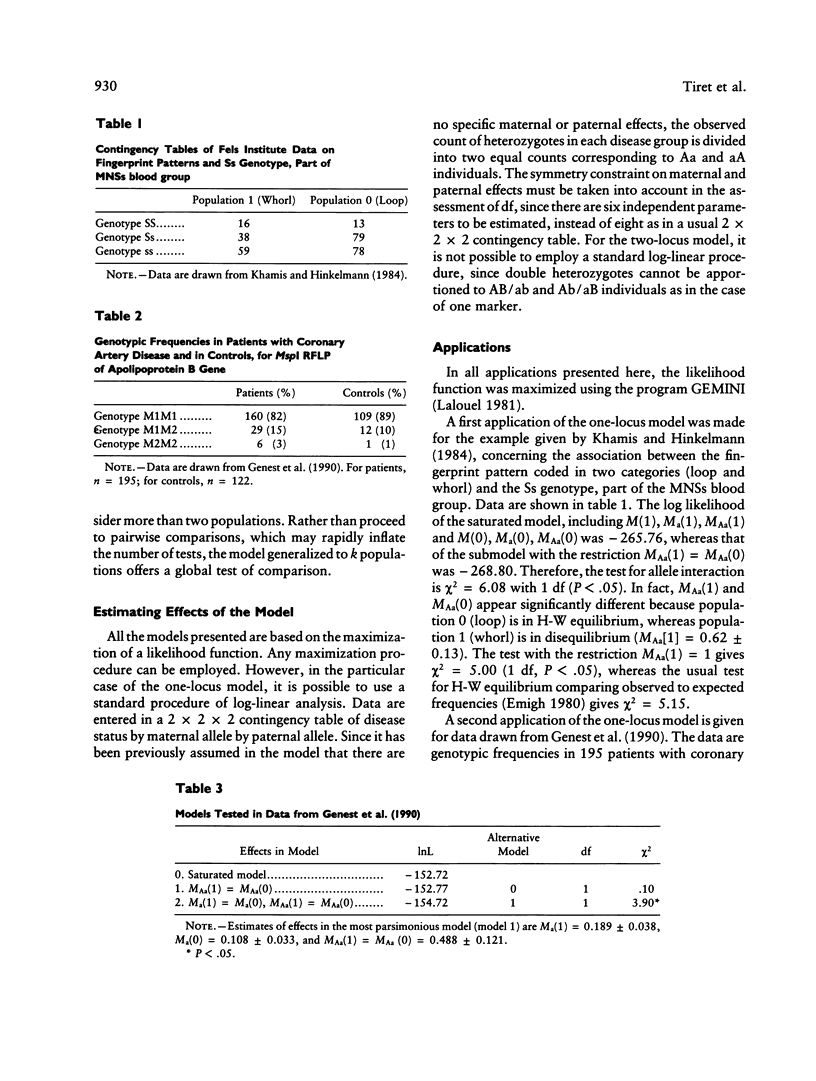Abstract
One approach frequently used for identifying genetic factors involved in the process of a complex disease is the comparison of patients and controls for a number of genetic markers near a candidate gene. The analysis of such association studies raises some specific problems because of the fact that genotypic and not gametic data are generally available. We present a log-linear-model analysis providing a valid method for analyzing such studies. When studying the association of disease with one marker locus, the log-linear model allows one to test for the difference between allelic frequencies among affected and unaffected individuals, Hardy-Weinberg (H-W) equilibrium in both groups, and interaction between the association of alleles at the marker locus and disease. This interaction provides information about the dominance of the disease susceptibility locus, with dominance defined using the epidemiological notion of odds ratio. The degree of dominance measured at the marker locus depends on the strength of linkage disequilibrium between the marker locus and the disease locus. When studying the association of disease with several linked markers, the model becomes rapidly complex and uninterpretable unless it is assumed that affected and unaffected populations are in H-W equilibrium at each locus. This hypothesis must be tested before going ahead in the analysis. If it is not rejected, the log-linear model offers a stepwise method of identification of the parameters causing the difference between populations. This model can be extended to any number of loci, alleles, or populations.
Full text
PDF








Selected References
These references are in PubMed. This may not be the complete list of references from this article.
- Genest J. J., Jr, Ordovas J. M., McNamara J. R., Robbins A. M., Meade T., Cohn S. D., Salem D. N., Wilson P. W., Masharani U., Frossard P. M. DNA polymorphisms of the apolipoprotein B gene in patients with premature coronary artery disease. Atherosclerosis. 1990 May;82(1-2):7–17. doi: 10.1016/0021-9150(90)90138-9. [DOI] [PubMed] [Google Scholar]
- Hill W. G. Tests for association of gene frequencies at several loci in random mating diploid populations. Biometrics. 1975 Dec;31(4):881–888. [PubMed] [Google Scholar]
- Norwood P. K., Hinkelmann K. Measures of association between disease and genotype. Biometrics. 1978 Dec;34(4):593–602. [PubMed] [Google Scholar]
- Thompson E. A., Deeb S., Walker D., Motulsky A. G. The detection of linkage disequilibrium between closely linked markers: RFLPs at the AI-CIII apolipoprotein genes. Am J Hum Genet. 1988 Jan;42(1):113–124. [PMC free article] [PubMed] [Google Scholar]
- Weir B. S. Inferences about linkage disequilibrium. Biometrics. 1979 Mar;35(1):235–254. [PubMed] [Google Scholar]
- Weir B. S., Wilson S. R. Log-linear models for linked loci. Biometrics. 1986 Sep;42(3):665–670. [PubMed] [Google Scholar]


